Paris to Bry-sur-Marne
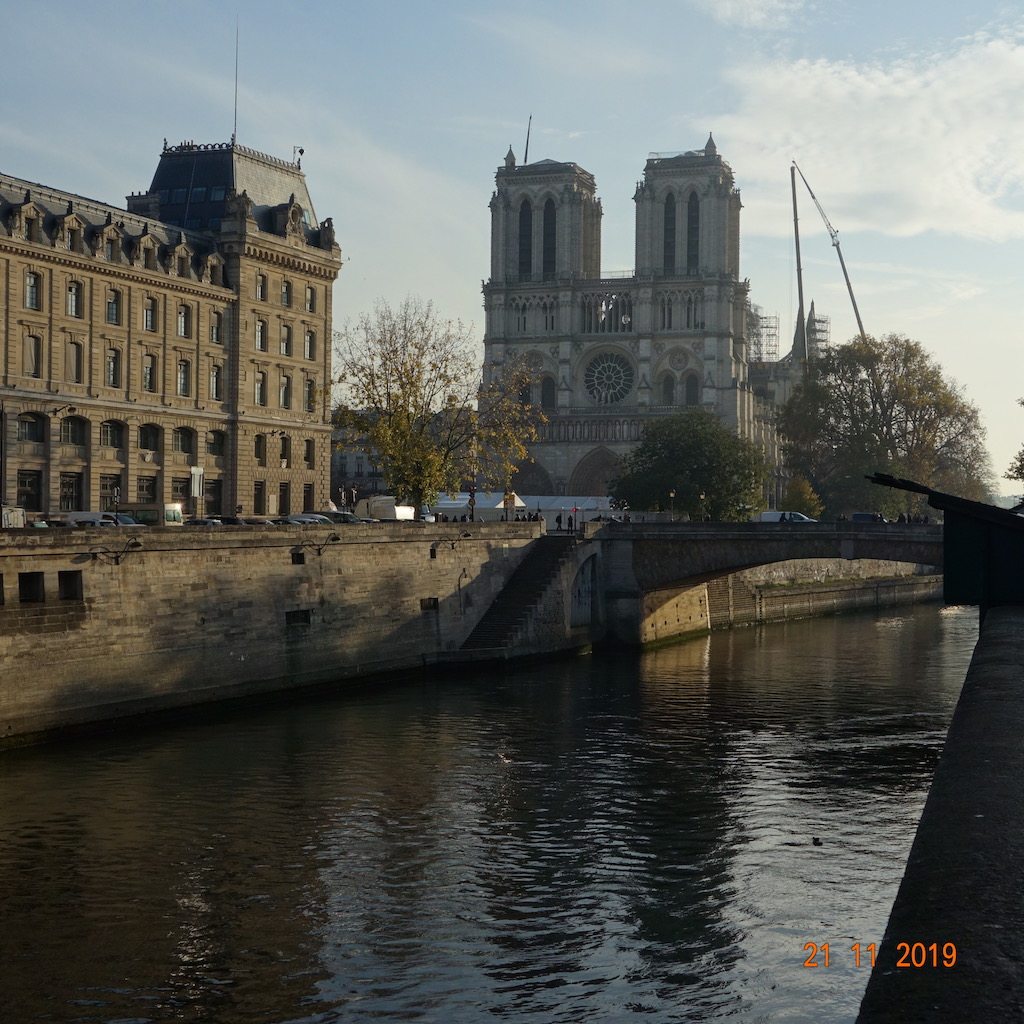
Île-de-France
11. Paris to Bry-sur-Marne
Medium
6h
21,1km
+189m
-185m
Step
Embed this item to access it offline
Leaving the capital, this stage links highly urbanized areas with a gradually rural and aerated plain.
14 points of interest
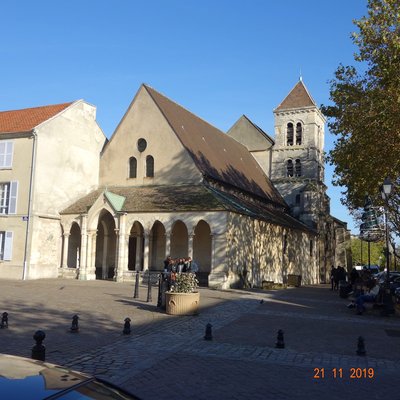
L’église Saint-Nicolas à Saint-Maur-des-Fossés - Association Colomban en Brie TouristSaint-Nicolas church in St Maur-des-Fossés
Saint Nicholas is the patron saint of bargemen: the title of the chapel must be linked to the river trade and the port of the abbey, on which the monks received each year, during the festival of the translation of their founder, Saint Babolein (7th century) a fishing right which allowed them to make a feast of fish. From this first chapel remains the bell tower, which was extensively altered in the 19th century, as well as the walls of the nave.
Following the development of the village of Les Fossés, frequented by the abbey's pilgrims, the chapel was enlarged and erected as a parish in the 1230s, under an abbot named Nicolas. The choir and its capitals decorated with local flora (clover, vine, ivy, oak), the large glass roof of the chevet, as well as the structure of the nave (not visible) date from this period.
The statue of Our Lady of Miracles (late 12th century) was transferred in 1790 from the abbey, where it had been the object of worship since 1328 - the date on which the legend of its miraculous manufacture was written - to the church of Saint-Nicolas, the statue of Our Lady of Miracles would have been spared by the revolutionaries thanks to the locksmith Hacar, one of Saint-Maur's first mayors. The cult was re-established in 1806.
Learn more about Wikipedia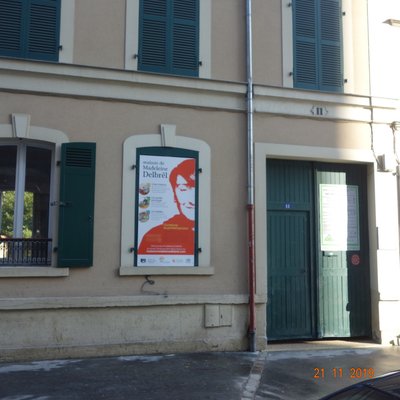
La maison de Madeleine Delbrêl, propriété du diocèse de Créteil - Association Colomban en Brie CulturalMadeleine Delbrêl à Ivry-sur-Seine
Madeleine Delbrêl (1904-1964) is a Catholic social worker.
Coming from an atheist family, she was baptized at the age of 20, after meeting a friend who would later return to the Dominicans. She joined a troop of guides and scouts in Ivry-sur-Seine, a communist town hall, and her destiny was already imbued with the need to help others.
She writes poems and literary essays while continuing to help others. She founded a community of women whose objective is to meet and help underprivileged families near Ivry-sur-Seine.
In 2018 Pope Francis recognized the "heroic virtues" of this lay missionary declared "venerable", the last station before the beatification.
A museum project is being undertaken by the Diocese of Créteil to set up a museum in its residential house, 11 rue Raspail in Ivry-sur-Seine.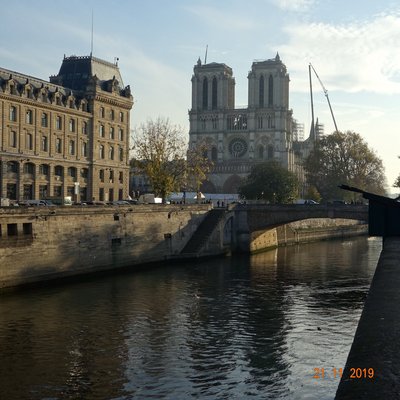
Façade de cathédrale de Paris Notre-Dame de Paris au bord de la Seine - Association Colomban en Brie CulturalNotre-Dame de Paris Cathedral
Notre-Dame de Paris Cathedral, a masterpiece of Gothic architecture, is the most visited monument in France. Its construction began in the Middle Ages, between the 13th and 15th centuries. Very damaged during the French Revolution, the cathedral was restored in the 19th century under the direction of architect Viollet-le-Duc. The many visitors admire the stained glass windows and rosettes, the towers, the arrow and the gargoyles. They can also discover the Treasure of Notre-Dame and try the ascent of the towers to enjoy a panoramic view of Paris. In 2013, the cathedral will renew its bell tower heritage with the arrival of eight new bells and a new bumblebee. A violent fire in April 2019 almost totally destroyed this heritage, for which delicate reconstruction work is now underway. The road distances in France are calculated from point 0, located on the square.
In April 2019, a violent fire broke out in the nave's roof following construction work. The entire roof needs to be rebuilt.
More information Wikipedia
Hôtel de ville d’Ivry-sur-Seine - Association Colomban en Brie TouristTown Hall, Ivry-sur-Seine
As the seat of the municipal administration and municipal political power, the town hall is also a key place in Ivry's history and memory.
On 11 June 1892, the Ivry City Council launched the idea of building a new city hall to take over from the bourgeois house, located on rue de Seine (now avenue Georges Gosnat), which has been home to the city hall since 1871.
Following a competition involving more than 70 competitors, the Parisian architect Adrien Chancel was appointed to carry out the construction of the new town hall. His project, in the Henri II style, was considered simple, well proportioned and rational.
The new building was inaugurated with great pomp and ceremony on April 19, 1896. Presided over by Eugène Poubelle, Prefect of the Seine, the ceremony brings together the city's driving forces: the city council, fire brigades, municipal staff, musical, sports and mutual societies.
Over the years, many works of art have enriched the interior decoration of City Hall.
Vestiges de l’église Notre-Dame de l’abbaye de Saint-Maur-des-Fossés - Association Colomban en Brie St ColumbanThe Abbey of Saint-Maur-des-Fossés
In 638, Bledegesile, archdeacon of Paris, had obtained from Clovis II son of Dagobert the donation of a peninsula located upstream of the confluence of the Seine and Marne rivers.
It was then called Castrum Bacaudarum or Castrum Fossatense. With the help of Bishop Audobert, he had a church built in honour of Saints Peter and Paul and Our Lady, around which a monastery was built, which took the old name: Monasterium Fossatense. To lead him, Bledegesile and his friend Agilbert (buried in the crypt of Jouarre) called upon Walbert, the third abbot of the monastery of Luxeuil founded by Saint Colomban in 592, who sent them a monk called Babolenus or Babolein.
The date of Babolein's death is uncertain around 670. The destinies of this monastery were modified by the arrival on March 12, 868 of the monks of Glanfeuil and their abbot Odon fleeing the Normans and bringing with them the sacred body of Saint Maur, disciple and friend of Saint Benedict, hence the name that the monastery took and the village that was built around it (Gilles Cugnier, Histoire du monastère de Luxeuil à travers ses abbés, tome 1, 2004)
In the 10th century, the abbey was reformed by the monks of Cluny, in the Middle Ages a scriptorium made the abbey famous. The abbey is also one of the first to practice musical notation in organum, the ancestor of polyphony.
The pilgrimage, frequented on Saint-Maur (15 January), and on Saint-Jean night (24 June), is specialized in the healing of gout, called mal Saint-Maur, and epilepsy, called mal Saint-Jean.
Fallen in order, the abbey was secularized in 1536 for the benefit of the bishop of Paris Jean du Bellay. His doctor, François Rabelais, was for a short time one of the canons of St Maur.
The only intact building, the 14th century enclosure tower, known as the Rabelais tower, which only lacks the roof, was classified as a Historic Monument in 1924
In the park remain the remains of the Notre-Dame-des-Miracles chapel (12th and 14th centuries), and some levelled walls of the northern collateral of the abbey-church choir, including a Gothic pillar.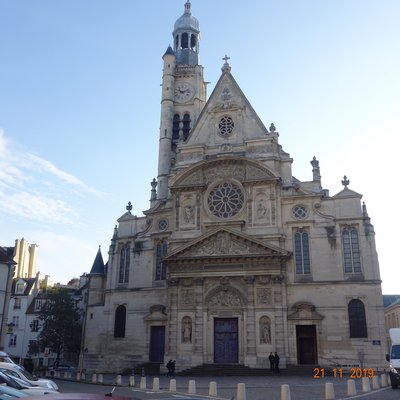
La façade de l’église Saint-Étienne du Mont - Association Colomban en Brie TouristSaint-Étienne-du-Mont church, Paris 5th
The Saint-Étienne-du-Mont church is an integral part of the history of Sainte-Geneviève Abbey (today the Lycée Henri IV). The abbey originated from the church of the Holy Apostles Peter and Paul founded by Clovis, around 508, at the top of what is now Mount Sainte-Geneviève. The abbey housed the relics of the saint and Clovis and, as such, became the city's most important place of pilgrimage. At the beginning of the 13th century, Philippe Auguste had a new wall built around Paris. The abbey district, which extends right next to the wall, is secure from it; its population is growing.
At the end of the 15th century, which in turn became insufficient, it was replaced by a larger building.
At the beginning of the 17th century, the factory had the cloister of the Charniers built at the chevet of the church, which still houses the gallery of stained glass windows of the Charniers, which are among the most beautiful in Paris.
The Revolution completely stripped the building. All that remains is the rood chamber, the tribune organ and the pulpit to preach. The church became a temple of filial piety, for the use of a new cult: theophilanthropy. However, by July 1795, Catholic priests returned and shared the church with theophilanthropists. In 1807, the abbey church of Sainte-Geneviève, devastated by looting, was destroyed. Only its bell tower (currently Clovis tower) remains. The monastery buildings will become the Henri IV high school.
More information: Wikipedia
Une partie des arènes de Lutèce - Association Colomban en Brie HistoricalArènes de Lutèce, à Paris 5ème arrondissement
The Arènes de Lutèce (former name of Paris) are located in the Latin Quarter and built between the 1st and the end of the 2nd century, could hold about 15,000 people. Originally, their dimensions were 132 metres long and 100 metres wide. The visitor can still see the location of the actors' box, the platform of the stage and the lapidary elements. The Arena of Lutèce and the Thermal Baths of Cluny (Cluny Museum) are the only testimonies of the Gallo-Roman period still visible in Paris.
More information Wikipedia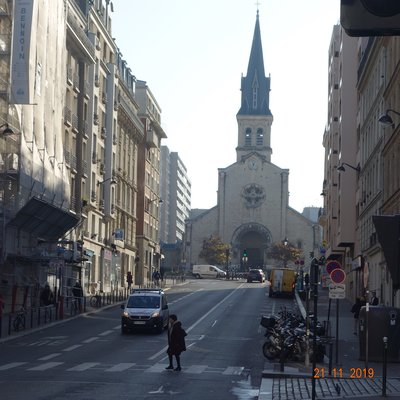
Façade de l’église Notre-Dame de la Gare depuis la rue Jeanne d’Arc - Association Colomban en Brie TouristÉglise Notre-Dame de la Gare à Paris - 13ème arrondissement
The current 13th arrondissement of Paris is located just north of the former Ivry boat station. At the end of the 18th century, many industrial establishments were established there, such as refineries and glass factories. At the end of the following century, automobile production plants were added. The population of the 13th arrondissement was therefore constantly increasing throughout the 19th century. An additional place of worship was needed. Like many Parisian churches, the Second Empire took care of it. Notre-Dame-de-la-Gare was built between 1855 and 1864 by the architect Claude Naissant (1801-1879).
Vue du Moulin restauré - Tourisme Val de Marne.com TouristThe Moulin de la Tour Porte d'Ivry
Magnificent mill located at the exit of the ring road, Porte d'Ivry. The only survivor of the windmills of the Val de Marne. Built around 1380 in rubble, typical of medieval buildings, it was an ordinary mill and was attached to the seigneury of Ivry and St Frambourg.
Since 1674, it has kept the same appearance. Its successive owners were known until the Revolution. It was then used as a hay shed. The restoration of the tower, structure and wings was carried out in 1980-81.
To know more about itWikipédia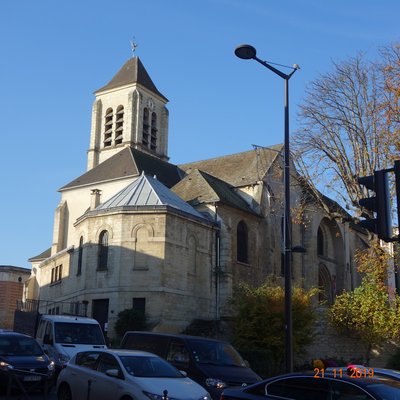
Église Saint-Pierre et Saint-Paul d’Ivry-sur-Seine - Association Colomban en Brie TouristSaint-Pierre and Saint-Paul Church in Ivry-sur-Seine
On the site of the church of Saint-Pierre and Saint-Paul d'Ivry-sur-Seine several sanctuaries have been built over the centuries. The parish of Ivry appeared in the early Middle Ages, the current church is mentioned for the first time in a text from 1158. The lower part of the bell tower dates from this period.
The 13th century saw the construction of two vaults, the capitals and Gothic arches of which are still preserved. In 1535, the main staircase, the entrance porch, the corresponding vault and the right-hand bays of the entrance were completed (one of the pillars dates back to 1575). On the same date, the wooden vault of the central nave was completed. The vault (behind the choir and the Sacré-Cœur chapel) was built in 1628 and then, in 1647, the seigneurial chapel, now the Virgin's chapel, was built.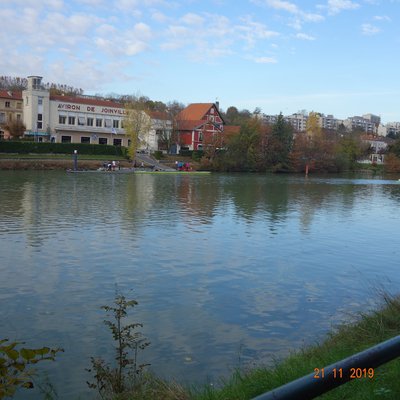
Club d’aviron de Joinville-le-Pont - jacques.prudhon TouristJoinville-le-Pont on the banks of the Marne
During the Merovingian period, the city settled around the abbey of Saint-Pierre-des-Fossés, founded in around 640. The commune of Joinville was originally part of the city of Saint-Maur, located in the lands belonging to the Abbey of Saint-Pierre-des-Fossés. A first bridge was built in 1205, "linen bridge". The bridge is built of wood, it houses two mills, is guarded by a garrison of 120 armed men and the abbot of Saint-Maur Abbey benefits from the toll charged when crossing the bridge. There is a toll booth on the hostel bridge, as well as a reception area for pilgrims, travellers and bargemen stopping in the city. On April 25, 1590, the Hamlet of the Bridge was destroyed. In 1649, the bridge was again destroyed by the supporters of the Fronde. In 1652, barely rebuilt, it was destroyed by the soldiers of Condé. In 1716-1718 the bridge was rebuilt in stone and not replaced until 1835. The current concrete bridge dating from 1937-1943. The marl edges include dance halls, sports clubs and former film studios.
By Philippe Serieys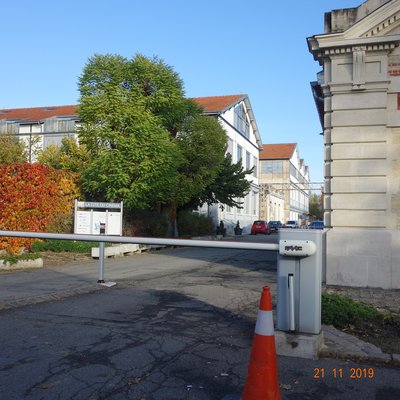
Entrée des anciens studios de cinéma à Joinville-le-Pont - Association Colomban en Brie CulturalJoinville-le-Pont : guinguettes et cinéma
In 1906, the Republic generalized weekly rest. Parisians escape into a nearby and accessible countryside thanks to improved transport. The banks of the Marne then become familiar and appreciated places.
It was in 1912 that Joseph Levinsky created, on a plot of land near Joyeuse Avenue, a very first film shooting studio for Charles Pathé and Léon Gaumont. In 1929, new studios, considered to be the best equipped in France, became the property of Pathé-Nathan - Pathé Consortium Cinéma - marking the beginning of the golden age of French cinema. In 1961, television took possession of the premises with the ORTF, then the RTF and finally the SFP until 1987, which definitively left the Joinville studios for Bry sur Marne. The studios were destroyed in the 1990s.
The slopes slope gently down towards the river, as in Nogent, there are still 9 rowing companies and 7 canoeing clubs from Créteil to Bry. The oldest of these companies, has its foundation in 1879.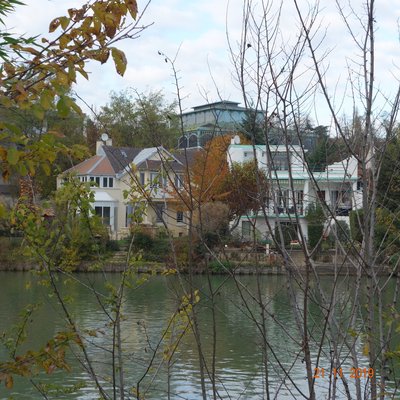
Halle de Baltard visible depuis la Via Columbani - Association Colomban en Brie TouristNogent-sur-Marne and the landscapes on the banks of the Marne
In the Marne Valley, the railway transformed the landscape with imposing structures such as the Nogent viaduct. The rise of urbanization led to the construction of many metal bridges at the beginning of the 20th century. The increase in road traffic in the second half of the century led to the construction of new bridges. Along the Marne you will see an element of the Paris halls built by Baltard, which went up there after the transfer of the large Parisian market to Rungis.
Église Saint-Gervais-Saint-Protais à Bry-sur-Marne - Association Colomban en Brie TouristKirche Saint-Gervais-Saint-Protais in Bry-sur-Marne
Bevor Louis Daguerre (1787-1851) die Daguerreotypie erfand und einer der Väter der Fotografie wurde, war er mit seinen Dioramen äußerst erfolgreich: transluzente bemalte Leinwände, die er mit hinter ihnen platzierten Lichtern animierte. Diese im Chor platzierte Trompe-l'oeil-Leinwand verwandelt die kleine Kirche von Bry-sur-Marne in eine imaginäre Kathedrale. Daguerres andere Gemälde sind auch im Hôtel de Malestroit in Bry zu sehen, ebenso wie Beispiele von Daguerreotypen.
Informationen: Rathaus unter 01-45-16-68-00/Museumsservice unter 01-45-16-68-33.
Zu besuchen in Bry-sur-Marne:
Hôtel de Malestroit: 2, grande rue Charles-de-Gaulle, 94360 Bry-sur-Marne.
Maison Daguerre: 4, rue du 136e de Ligne, 94360 Bry-sur-Marne.
Adrien Mentienne Museum - Espace Joron: 6 bis, grande rue Charles-de-Gaulle, 94360 Bry-sur-Marne.
Description
From the square and in front of Notre-Dame de Paris Cathedral (point 0 on the maps of France and Charlemagne's statue). On the right, cross the Pont au Double, turn left at the second street, rue Lagrange,
At the crossroads Maubert-Mutualité, cross boulevard Saint-Germain, on the right, rue de la Montagne Sainte-Geneviève, place de la Fontaine continue slightly on the right, rue de la Montagne Sainte-Geneviève
At the crossroads Maubert-Mutualité, cross boulevard Saint-Germain, on the right, rue de la Montagne Sainte-Geneviève, place de la Fontaine continue slightly on the right, rue de la Montagne Sainte-Geneviève
- On the right in front of the Saint-Etienne du Mont church, Rue Clovis, second on the right in rue du cardinal Lemoine, on the left in rue Rollin, cross the rue Monge, opposite you in rue de Navarre on the right continue in rue de Navarre, on the left in rue Lacépède on the right in the square, rue Geoffroy Saint-Hilaire, on your left in square Fontaine Wallace. Cross boulevard Saint-Marcel opposite and then slightly on your left, rue Jeanne d'Arc
- Cross the boulevard de l'Hôpital, straight ahead cross the Federica Montseny garden, continue rue Jeanne d'Arc in front of you, go around the church Notre-Dame de la Gare on the right, on the right at the chevet of the church, cross the Souhan square
- At the crossroads cross rue Jean Colly and on the left, rue du Château des rentiers, cross boulevard Masséna, opposite rue Péan, second on the left avenue Claude Regaud, on the left avenue de la porte d'Ivry, take the bridge on boulevard Périphérique. You enter Ivry-sur-Seine, on the left cross the access ramp to access, rue André Voguet, on the right Avenue Maurice Thorez, on the left Place de la République avenue Georges Gosnat, on the right rue Raspail, on the left rue Saint-Just, take the bridge over the railway line, rue Denis Papin
- Third street on the left on the Place de l'Insurrection d'Août 1944, rue Pierre Galais, cross boulevard Paul Vaillant-Couturier, opposite rue Moise, on the right rue des Péniches, first on the left quai Auguste Deshaies follow the quai de Seine until the bridge of Ivry that you take by the access ramp on the left to cross the Seine.
- First street on the left rue de la Marne, on the right quai d'Alfortville follow the edge of the Marne for 3600 metres, on the left take the Maisons-Alfort bridge, on the right towpath, quai Schaken, second street on the left, rue Politzer, cross the boulevard Maurice Berteaux, opposite rue du Four straight rue de l'Abbaye
- On the right quai Beaubourg, on the left take the first bridge, pont du Petit Parc, on the left quai Gabriel Péri, la Marne on your left, after taking the footbridge to cross the water arm, first street on the right avenue Courtin, on the left quai de Béthune the water arm is on your right, cross the avenue Jean d'Estienne d'Orves, on the right in front of the Marne quai de Polangis, follow the edge of Marne, quai du Viaduct, quai Lucie, quai Louis Ferber
- Pass under the Bry bridge, first street on the right, rue Basse d'Amont, cross the D120 at the crossroads and then follow the car park to reach the square in front of the Saint-Gervais Saint-Protais church in Bry-sur-Marne.
- Departure : Notre-Dame Cathedral, Place Jean-Paul II 75 004 Paris
- Arrival : Church St Gervais et St Protais 4 Grande rue Charles de Gaulle 94360 Bry sur Marn
- Towns crossed : Île-de-France
Altimetric profile
Report a problem or an error
If you have found an error on this page or if you have noticed any problems during your hike, please report them to us here:
Close by8
- Accommodation
Accommodation
Hôtel Marignan in Paris
Hotel Marignan is a family hotel located in a quiet street in the 5th arrondissement in the heart of the Latin Quarter in Paris. Close to Notre Dame de Paris (6 minutes on foot), the Sorbonne University, the Pantheon and the Luxembourg Gardens (5 minutes on foot), the hotel is ideally located for visiting Paris.








